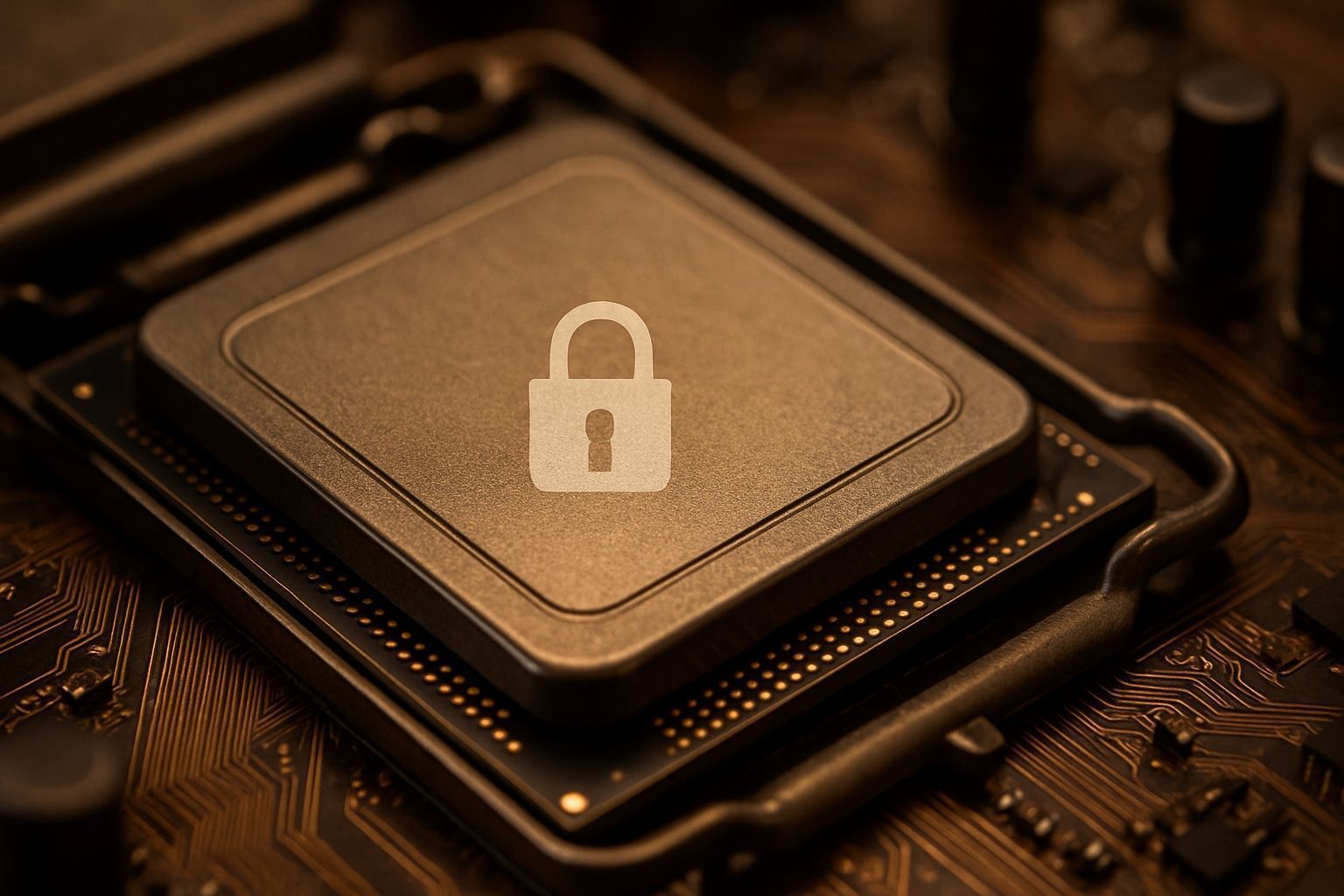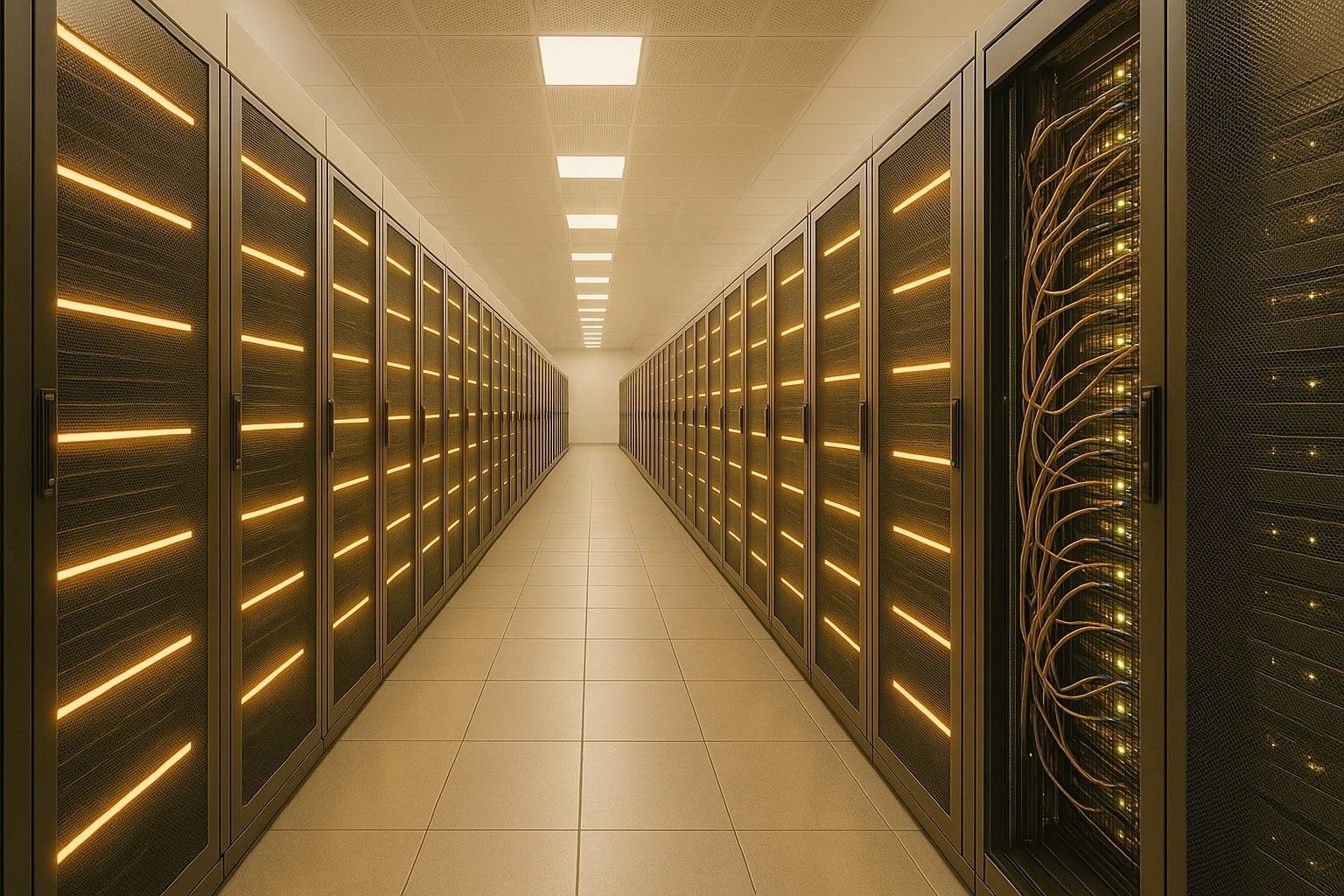- Azure announced in June 2025 that SGX-based DCsv2 confidential VM instances will be retired by June 30, 2026, with SGX capacity restrictions starting July 1, 2025 and a migration to DCasv5/ECasv5 or DCasv6/ECasv6 confidential VMs using AMD SEV-SNP or Intel TDX.
- Intel’s 5th-Gen Xeon Emerald Rapids processors with Trust Domain Extensions (TDX) are debuting in cloud services, with Microsoft Azure launching a preview of TDX-powered VMs in April 2025.
- Linux kernel 6.16, released mid-2025, merged host support for Intel TDX, signaling readiness for broad deployment.
- Google Cloud has generally available AMD SEV-SNP-based VMs on 4th Gen EPYC Genoa servers, enabling memory encryption and SNP protections.
- Arm is preparing Confidential Compute Architecture (CCA) Realms on Armv9 chips, with Fujitsu’s next-generation Monaka processor implementing CCA for confidential compute.
- Apple announced Secure Enclave-backed passkeys and authentication tokens at WWDC 2025, enabling passwordless logins and hardware-tied credentials.
- NVIDIA’s H100 data-center GPUs include Confidential GPU capabilities with memory encryption engines and remote attestation to protect AI models and data.
- RISC-V’s CoVE confidential VM Extension aims to standardize TEEs across embedded, edge, and cloud, with IBM ACE for embedded and Rivos Salus for cloud announced by May 2025.
- The global confidential computing market is forecast to grow from roughly $24 billion in 2025 to over $350 billion by 2032, a ~46% CAGR.
- Anjuna reports that three of the world’s top 10 banks are using its enclave technology for secure data processing, with the addition of a new global top-5 bank in June 2025.
Trusted Execution Environments (TEEs) – secure hardware enclaves that protect code and data – have seen significant developments in mid-2025. Below is a comprehensive overview of the latest TEE-related hardware announcements, market trends, security updates, use cases, expert insights, and policy moves from June and July 2025.
Latest Product Announcements and Upgrades from Key Players
- Intel (SGX and TDX): Intel’s focus has shifted from the older Software Guard Extensions (SGX) to newer Trust Domain Extensions (TDX) for confidential computing. Microsoft Azure announced in June 2025 that it will retire SGX-based DCsv2 confidential VM instances by June 30, 2026, marking the end of SGX enclaves in Azure [1]. Starting July 1, 2025, Azure is already restricting SGX VM capacity and urging customers to migrate to next-gen confidential VMs [2] [3]. These newer Azure VM series (DCasv5/ECasv5, DCasv6/ECasv6) leverage AMD SEV-SNP or Intel TDX for whole-VM encryption and isolation [4]. Intel’s 5th-Gen Xeon “Emerald Rapids” processors with TDX are debuting in cloud services – Azure launched a preview of TDX-powered VMs in April 2025, enabling hardware-enforced memory encryption and attestation without application changes [5] [6]. In the Linux ecosystem, Intel TDX support is rapidly maturing: the Linux 6.16 kernel (mid-2025) merged host support for TDX, indicating readiness for broad deployment of TDX enclaves on upcoming Xeon platforms [7] [8].
- AMD (SEV/SEV-SNP): AMD’s Secure Encrypted Virtualization (SEV) technology continues to gain traction. All major cloud providers are now rolling out AMD-powered confidential VMs. Google Cloud, for example, recently made AMD SEV-based VMs generally available on its 4th Gen EPYC “Genoa” servers [9] [10]. These confidential VMs keep data encrypted in memory using SEV-SNP, which adds memory integrity protections against hypervisor attacks [11]. Microsoft Azure’s new confidential VM families also include AMD SEV-SNP options (DCasv5/ECasv5 series), offering customers a choice of Intel or AMD-backed TEEs [12]. On the software side, enhancements to AMD’s TEE support are in progress – for example, Linux kernel 6.16 introduces a driver for AMD’s Secure VM Service Module (SVSM), enabling virtual TPM devices inside SEV-SNP guests for higher trust in VM workloads [13] [14]. This improves functionality like measured boot and attestation within AMD confidential VMs. No major new AMD hardware was announced in June-July, but the company’s existing Infinity Guard security features (which include SEV) continue to be a key differentiator for EPYC processors in cloud and enterprise deployments.
- Arm (TrustZone and CCA): In the Arm ecosystem, attention is on the upcoming Confidential Compute Architecture (CCA), which will bring stronger TEEs to Armv9 chips beyond the traditional TrustZone. Arm’s CCA introduces “Realms” – secure execution environments orthogonal to the normal world and TrustZone – slated to debut in hardware soon [15] [16]. While CCA-enabled CPUs are expected later in 2025, the ecosystem is gearing up: at the Linaro Connect conference in May 2025, Fujitsu revealed that its next-generation Monaka processor will implement Arm CCA to enable confidential AI workloads [17] [18]. This indicates that CCA-based Realms are moving from concept to reality, with industry support. TrustZone remains widely used in mobile and IoT; for instance, new Arm-based secure elements and SoCs continue to use TrustZone for isolated code (though no specific TrustZone hardware launches were noted in June-July 2025).
- Apple (Secure Enclave): Apple’s Secure Enclave, a TEE embedded in its SoCs, saw software upgrades that highlight its importance. At WWDC in June 2025, Apple announced enhancements toward a passwordless future by leveraging Secure Enclave–backed credentials. New features in iOS/macOS allow “passkeys” and authentication tokens stored in the Secure Enclave, providing phishing-resistant logins tied to hardware [19]. Support for Secure Enclave–backed authentication in device management was highlighted as moving Apple “closer to a passwordless future,” underscoring Apple’s continued investment in hardware-based security for consumers and enterprises [20]. While Apple did not unveil new enclave hardware in mid-2025 (e.g. no new chip purely for security), these software changes show the Secure Enclave being used more broadly (from Face ID and Apple Pay to now corporate device identity and authentication). Apple’s TEE thus remains a cornerstone of its platform security, enabling use cases like digital car keys, health data protection, and more – all isolated from iOS/macOS’s main OS by hardware.
- NVIDIA and Others: NVIDIA has been bringing TEE concepts to GPU computing. Recent reports (late 2024 and early 2025) from NVIDIA’s researchers describe the first “Confidential GPU” capabilities, which allow portions of GPU-accelerated workloads to run in encrypted memory with attestation [21]. NVIDIA’s H100 data-center GPUs introduced confidential computing features (such as memory encryption engines and remote attestation support) to protect AI models and data on the GPU, an innovation in applying TEEs to accelerators rather than general-purpose CPUs [22]. While not a June 2025 announcement, it reflects ongoing hardware evolution beyond CPUs – relevant as AI and ML workloads often run on GPUs. RISC-V is also progressing: the RISC-V community is developing a unified confidential computing spec called CoVE (Confidential VM Extension) to avoid fragmentation in open-source TEEs. In May 2025, IBM researchers announced ACE, a formally-verified TEE framework for RISC-V embedded systems, which has influenced the draft CoVE spec [23] [24]. CoVE aims to standardize RISC-V TEEs across embedded, edge, and cloud use cases, with multiple implementations (IBM’s ACE for embedded, Rivos’s “Salus” for cloud) under development [25] [26]. This shows that open architectures are joining the TEE trend, ensuring RISC-V will have trust hardware features comparable to x86 and Arm in coming years.
Forecasts and Market Trends in TEE Adoption
Analysts project explosive growth in confidential computing adoption over the next decade. According to market research forecasts, the global confidential computing market (hardware and software) is expected to grow from roughly $24 billion in 2025 to over $350 billion by 2032, a staggering ~46% CAGR [27]. This reflects the industry’s expectations that TEEs will become ubiquitous across cloud and edge infrastructure. Driving this growth are increasing data privacy demands, regulatory pressures, and the surge in sensitive AI workloads – all of which benefit from “data in use” protection that TEEs provide.
Recent developments in June 2025 support this trajectory. In the financial sector, known for strict security, confidential computing is reaching mainstream deployment. Anjuna (a TEE platform vendor) announced that three of the world’s top 10 banks are now using its enclave technology for secure data processing [28] [29]. The addition of a new global top-5 bank in June 2025 was described as “an inflection point” for confidential computing adoption in finance, as these risk-averse institutions move from pilot projects to operational use [30]. Bank use cases include fraud detection and analytics on sensitive data across jurisdictions, enabled by enclaves that keep data encrypted even during computation [31]. As Anjuna’s CEO noted, this trend shows confidential computing “becoming the new foundation for secure digital finance”, allowing banks to harness high-value data for AI and analytics “with zero compromise” on privacy [32]. Market analysts expect that once top-tier banks and enterprises adopt TEEs, broader industry adoption will quickly follow as organizations seek similar security and competitive advantages.
Cloud computing trends also illustrate growth. By mid-2025, all major cloud service providers (Microsoft Azure, Google Cloud, AWS, IBM Cloud, Alibaba, etc.) offer some form of confidential computing service – from enclave VMs to confidential containers – often leveraging hardware from Intel or AMD. Google Cloud, for example, expanded its Confidential VM offerings to general availability across multiple regions, using AMD SEV-SNP on N2D instances and Intel TDX on newer C3 instances [33] [34]. Azure’s latest preview (DCesv6/ECesv6) and AWS’s Nitro Enclaves (based on dedicated Nitro hardware) likewise indicate that confidential VMs/containers are becoming a standard cloud feature. Industry surveys show increasing interest in moving sensitive workloads (like healthcare and financial data processing, multi-party analytics, and ML on private data) into these confidential cloud environments. In short, the early summer of 2025 confirms that TEEs are transitioning from niche to “baseline” technology for cloud security, aligned with the broader zero-trust movement in cybersecurity.
Security Developments: Vulnerabilities, Patches, and Compliance
No security technology is without challenges, and TEEs saw a mix of vulnerabilities disclosed and mitigations in this period. In early 2025, researchers revealed a high-severity flaw in AMD’s SEV-SNP that could undermine its confidentiality guarantees. The issue (CVE-2024-56161) involved improper signature verification in the CPU microcode loader, potentially allowing a malicious admin to inject rogue microcode and break the memory encryption of SEV-protected VMs [35] [36]. AMD acknowledged the problem (discovered by Google’s cloud security team) and in February 2025 released firmware patches (AGESA updates to motherboard/BIOS) to block untrusted microcode uploads [37] [38]. The patch requires updating system BIOS and the SEV firmware; once applied, attestation reports will indicate the fix so that guest VMs can verify they’re on a patched host [39] [40]. This swift mitigation was important because the vulnerability could have led to “loss of confidentiality and integrity of a confidential VM” under an attacker with root privileges on the host [41]. AMD also noted in the same advisory that it received academic reports of cache-based side-channel attacks on SEV, recommending software follow best practices to mitigate those [42]. These events underline that while TEEs raise the bar for attackers, they are not invulnerable – ongoing research continues to poke holes, especially via side-channels or improper implementation of cryptography.
Intel’s enclave technologies likewise faced scrutiny. In January 2025, a team from IIT Kharagpur (with Intel researchers) uncovered a critical isolation vulnerability in Intel’s TDX (Trust Domain Extensions) [43] [44]. TDX is Intel’s new flagship for confidential VMs, so an isolation flaw is significant – it was reported that under certain conditions, a malicious hypervisor could break the isolation between a TDX guest and the VMM, violating the trust guarantees. (The technical details were published via IACR and hinted to involve issues with nested paging and shared resources.) Intel has been working on mitigations – some of which may involve microcode updates or improved TDX module firmware – and collaborated with the researchers to address the issue. The disclosure of this “critical TDX isolation vulnerability” (publicized in late January 2025) highlights that even the latest TEE implementations require rigorous validation [45] [46]. However, Intel’s quick engagement with academia on this suggests a proactive stance in shoring up TDX before it reaches mass deployment.
Legacy Intel SGX also continues to see occasional attacks. While no brand-new SGX flaws were headline news in June-July 2025, it’s worth noting that over the past years SGX has suffered side-channel leaks (Spectre-like issues, Plundervolt voltage fault injection, SGAxe, etc.), eroding confidence in its resilience [47] [48]. These accumulated issues are part of why cloud providers are deprecating SGX in favor of VM-based TEEs. In fact, even an open-source project Cloud Hypervisor dropped SGX support in mid-2025, with maintainers citing limited demand and security concerns, while Google is taking a lead on upstream maintaining of Intel TDX going forward [49]. This reflects an industry pivot: process-level enclaves like SGX proved tricky to secure and use, whereas VM-level TEEs (AMD SEV, Intel TDX) are becoming the preferred model despite their own emerging vulnerabilities.
On a more positive note, TEE vendors are advancing features to improve security and compliance. Intel and Microsoft have collaborated on Project Amber and Intel Trust Authority (codenamed “Tiber”), which are independent attestation services for confidential computing. In the Azure preview of TDX VMs, Microsoft added support for Intel Tiber Trust Authority, allowing cloud customers to get an attestation report signed by an external Intel service instead of solely the cloud provider [50]. This kind of feature strengthens trust for multi-tenant cloud users (verifying that even the cloud operator cannot tamper with the enclave, a key compliance concern for sensitive workloads). Similarly, Azure’s new confidential VMs use an open-source paravisor called OpenHSM/OpenHCL to reduce proprietary black boxes in the TEE stack [51] – increasing transparency. These enhancements are aimed at meeting compliance requirements in regulated industries: by providing cryptographic attestation and audit artifacts, TEE solutions can help organizations prove to auditors that data remains protected even in use.
Use Case Examples in Consumer, Enterprise, and Government
Trusted hardware enclaves are being applied across consumer devices, enterprise IT, and government projects to protect sensitive data:
- Consumer/SOE Devices: In the consumer realm, smartphones and personal devices now heavily rely on TEEs for security. A prominent example is Apple’s Secure Enclave in iPhones, iPads, and Macs. As noted above, Apple is using the enclave to store Passkeys and enable passwordless logins secured by hardware [52]. This means a user’s biometric authentication and cryptographic keys never leave the isolated enclave, drastically reducing phishing and theft risks. Another everyday use case is mobile payments: both Apple Pay and Android Pay leverage TEEs (Secure Enclave and Android’s TrustZone-based StrongBox keystore) to store card credentials and perform cryptographic authentication securely. Similarly, messaging apps and end-to-end encryption services on phones often utilize TEEs to manage encryption keys (e.g., WhatsApp on Android stores keys in the TrustZone keystore, and iPhone iMessage keys reside in the Secure Enclave). Even gaming consoles employ TEEs – for instance, Sony’s PS5 and Microsoft’s Xbox have secure processor elements to protect firmware and prevent cheating or content piracy. While such consumer use cases aren’t always announced as “TEE news,” they form a backdrop in 2025: users increasingly (and maybe unknowingly) rely on TEEs for everyday security like Face ID unlocks, digital wallet transactions, and health data confidentiality.
- Enterprise & Cloud: Enterprises are adopting confidential computing to protect data in use, particularly in cloud or multi-party analytics scenarios. Financial services provide a strong example: Banks are using TEEs to enable analytics on encrypted data. In June 2025, it was reported that major banks are running fraud detection algorithms on shared transaction data using enclaves, so that multiple institutions can pool data for AI models without exposing raw sensitive information [53] [54]. Enterprise SaaS companies, too, are starting to integrate TEEs – for instance, some database and analytics vendors offer an “enclave mode” where customer data is processed inside a TEE, even on the vendor’s cloud, to mitigate insider risk. Cloud providers have showcased use cases like confidential data collaboration (two companies can jointly compute on combined datasets via an enclave, without either side seeing the other’s raw data). Another emerging enterprise use case is machine learning on confidential data: ML training or inference can be done in a TEE so that the training data (e.g. medical records, personal data) and the model parameters remain encrypted. By mid-2025, companies like Microsoft, Google, and startups (Edgeless, Opaque Systems, etc.) demonstrated privacy-preserving AI pipelines using TEEs and/or allied techniques (secure MPC, federated learning). This is especially relevant in healthcare and insurance – e.g., hospitals can use enclaves to run joint analytics on patient data across institutions, or an insurance company can query a hospital’s data via enclave without violating HIPAA regulations. We also see DevOps tools adopting TEEs: for example, some CI/CD pipelines now support running build tasks in enclaves to protect secrets (like signing keys or proprietary code) from the rest of the build environment.
- Government and Public Sector: Governments are both regulators of and early adopters of TEE tech. On the adoption side, public sector organizations are using TEEs for things like secure data sharing between agencies. Anjuna’s press release in June mentioned that the U.S. Navy is among its customers leveraging confidential computing [55]. While details are sparse, this could involve secure processing of classified or sensitive data in cloud-like environments, or enabling coalition data sharing where only agreed analytics come out of the enclave. Government defense projects (e.g., within the U.S. Department of Defense) have been testing enclaves to allow cross-domain data analysis – for instance, combining data at different classification levels or from different allies in one secure environment that assures everyone that their inputs remain confidential. In civilian government, enclaves are used for privacy-sensitive workloads such as census data processing, tax record matching, or healthcare exchanges, where agencies must comply with strict privacy laws but still need to compute on citizen data. The national security angle is also driving TEE use: intelligence agencies are exploring TEEs to safeguard methods and data (even from insiders), and to securely run analytics on outsourced cloud infrastructure. For example, a TEE could let an agency use a public cloud for computing on encrypted data without the cloud provider ever being able to access the plaintext – a capability of high interest in government cloud procurements. Outside the U.S., European Union agencies and various national governments are likewise piloting confidential computing for GDPR-compliant cloud services (ensuring that even cloud admins cannot access EU citizen data). Overall, by 2025 governments see TEEs as a tool to improve security and privacy in government IT systems and also as a technology to foster trust in public cloud (some government cloud programs explicitly require TEE support for providers to be certified for sensitive workloads).
Expert and Analyst Insights
Industry experts and analysts in 2025 consistently emphasize the growing importance of TEEs. Ayal Yogev, CEO of Anjuna, remarked that securing another top global bank with confidential computing is “further proof that Confidential Computing is becoming the new foundation for secure digital finance”, enabling analytics and AI on sensitive data “with zero compromise” in security [56]. This sentiment – that enclaves will underpin the next generation of secure computing – is echoed by many in cybersecurity leadership. At the Confidential Computing Summit (held June 17–18, 2025 in San Francisco), enterprise CISOs and cloud architects shared case studies and noted that hardware-based isolation is key to zero-trust architectures: It provides a tangible root of trust that even malicious insiders or network intruders find extremely hard to bypass. Experts from companies like Microsoft and Google highlighted how confidential computing is critical for unlocking cloud adoption by highly regulated customers (finance, healthcare), since it “allows moving sensitive workloads to cloud with the assurance of hardware-level protection” (as one Azure Confidential Computing program manager put it in a panel discussion).
Analysts also project that confidential computing will be a pillar of enterprise security strategy. Gartner, in its Emerging Tech report (Q1 2025), named confidential computing as a top innovation in preemptive security, predicting that by 2026 “at least 20% of large enterprises will be running sensitive computations in TEEs” to protect against advanced threats and insider risks. On the developer side, there’s recognition that the ecosystem needs to mature – a point raised by open-source contributors in the RISC-V community, who stressed the need for common TEE abstractions and standards to avoid “vendor lock-in” and ease adoption [57] [58]. This is leading to collaborative efforts (across Intel, AMD, Arm, and others, often under the Confidential Computing Consortium) to define unified attestation schemas and APIs. For example, the CCC’s June 2025 newsletter highlights ongoing work on standardizing endorsement and attestation token formats so that verifications can be interoperable across TEE types [59] [60].
Another expert viewpoint is the role of confidential computing in privacy and compliance. A January 2025 Forbes Technology Council article argued that to truly stop data breaches of sensitive cloud data, governments might eventually mandate confidential computing for SaaS applications handling personal information as part of cybersecurity regulation [61]. The author noted that breaches often occur when cloud providers or SaaS apps process data in plaintext; TEEs could mitigate this by ensuring data is almost always encrypted or in protected memory. While this is a forward-looking suggestion, it aligns with a broader push towards “privacy by default” architectures. Privacy researchers often mention enclaves alongside techniques like homomorphic encryption and multi-party computation as critical tools. Indeed, the U.S. White House explicitly listed “secure enclaves” as a privacy-enhancing technology in late 2023 (more below), and experts see that as validation at the highest level that TEEs are part of the future toolkit for protecting data.
It’s also worth noting comments from hardware engineers that the attack surface is shifting: as TEEs protect data in use, attackers may focus more on supply chain and firmware. In response, analysts commend initiatives like open-source TEE firmware (e.g., AMD’s open SVSM project, Microsoft’s Open Enclave SDK) and formal verification of TEE components (such as Microsoft’s Verifiable VSM work, or the above-mentioned RISC-V ACE which is being mathematically verified). These efforts, experts say, will be necessary to gain full trust in TEEs for the most critical applications, and we’re seeing initial progress in 2025.
Regulatory and Policy Developments
Governments and regulatory bodies are increasingly factoring TEEs into their policies on data security and privacy:
- Executive Order & Government Guidance: In the United States, a milestone was the Executive Order on AI and privacy issued by President Biden in October 2023, which was still a talking point through 2025. This order explicitly references the need for “privacy-enhancing technologies” and even names secure enclaves in its definition of such technologies [62]. By including secure enclaves alongside techniques like homomorphic encryption and federated learning, the U.S. government signaled that TEEs are an approved method for safeguarding sensitive data (especially to protect citizens’ privacy as AI capabilities grow). The EO directs federal agencies to use these technologies to secure data and mitigate privacy risks [63] [64]. Practically, this means agencies investing in AI or cloud deployments are encouraged (if not eventually required) to leverage TEEs when handling personal data. Following this, NIST and other agencies have been developing guidance – for instance, NIST is working on standards for TEE attestation and considering TEEs in frameworks like Zero Trust Architecture for federal IT. We also see interest in TEEs for compliance with existing laws: for example, U.S. healthcare regulations (HIPAA) don’t explicitly mention TEEs, but using TEEs can help meet HIPAA’s security rule by technically enforcing that even cloud admins can’t access patient data.
- International and Industry Regulations: In Europe, while not mandated by name, TEEs can help meet GDPR obligations. GDPR demands strong protection for personal data, and regulators have shown interest in technologies that reduce exposure of data. The UK’s Information Commissioner’s Office and France’s CNIL have in recent years championed Privacy-Enhancing Technologies (PETs) that allow data use without compromising privacy [65] [66]. Trusted Execution Environments are often cited as PETs in this context. An April 2025 whitepaper by the Interactive Advertising Bureau (IAB) even suggests that regulators incorporate TEE requirements into frameworks to enforce privacy-by-design in digital advertising [67]. The logic is that if ad tech platforms use TEEs to handle user data (for ad personalization or measurement), it provides verifiable technical guarantees of privacy, which could satisfy regulators and users. The IAB paper notes that TEEs offer “verifiable and auditable privacy and security protections” and can support compliance with data protection principles like data minimization and purpose limitation in advertising [68] [69]. This indicates industry groups are lobbying for recognition of TEEs as compliance tools.
- Mandates and Standards: While few regulations yet mandate TEEs, some sectoral standards are moving that direction. For example, the U.S. Department of Defense’s CMMC 2.0 (Cybersecurity Maturity Model Certification) includes requirements for protecting controlled unclassified information; guidance around Level 3 hints that using hardware security features (like TPMs or TEEs) to isolate sensitive processes can help satisfy certain controls. Financial industry standards (like PCI-DSS for payment data) have started acknowledging that using secure enclaves to process credit card data could reduce audit scope by technically preventing exposure of raw card numbers to the rest of the system – this isn’t formalized yet, but discussions are ongoing. The Confidential Computing Consortium has a Governance, Risk, and Compliance (GRC) working group that as of mid-2025 is actively engaging with regulators and standards bodies to educate them on TEE capabilities. They report growing interest from regulators in certifiable enclaves – for instance, exploring if a cloud TEE can be evaluated similar to a Hardware Security Module (HSM) under schemes like FIPS-140 or Common Criteria. Notably, in 2025 IBM achieved a Common Criteria certification for its own TEE-like technology (the IBM Z “Protected Execution Facility”), setting a precedent that TEEs can meet high assurance levels for government use.
Overall, policy trends are favorable to confidential computing. Governments want to encourage data sharing and cloud adoption but without sacrificing privacy or sovereignty. TEEs provide a solution by technically enforcing restrictions on data access. We see this in multi-nation projects too – for example, Europe’s GAIA-X cloud initiative lists confidential computing as an attribute that providers should offer to ensure data sovereignty for cloud users. In summary, mid-2025 has policymakers recognizing and even incentivizing TEE use: the White House calls out secure enclaves as important for AI safety [70], industry groups urge regulators to bake TEE options into privacy regs [71], and standards bodies are working to allow TEE-based compliance. We can expect future laws (especially those around AI and critical data) to explicitly reference and require privacy-preserving technologies like TEEs as they become more proven and widespread.
Conclusion
In June and July 2025, the TEE landscape is vibrant: major tech companies are rolling out new hardware support and cloud services, forecasts predict massive growth as confidential computing goes mainstream, and both breakthroughs and patches on the security front are making headlines. Use cases now span from consumer phones to multinational banks and government clouds, reflecting a technology maturing into real-world deployment. Experts champion TEEs as a cornerstone of modern security architecture, and regulators are increasingly supportive of (or even demanding) technologies that protect data in use.
Trusted Execution Environments were once a niche idea for securing enclaves of code; they are now evolving into a standard practice for protecting sensitive computation. As we move beyond mid-2025, watch for even broader adoption – aided by ongoing improvements in performance, easier developer tools, and clearer regulatory guidance – pushing confidential computing closer to its vision of making cloud and edge computing inherently secure and trustworthy by design.
Sources:
- Azure Pro (Shailesh Vaja) – “DCsv2-Series Azure VMs Retirement: What You Need to Know and How to Migrate” (Azure blog, June 18, 2025) [72] [73]
- Microsoft Azure Confidential Computing Blog – “Announcing preview for the next generation of Azure Intel TDX Confidential VMs” (Apr 17, 2025) [74] [75]
- Phoronix (Michael Larabel) – “Linux 6.16 Could See AMD SEV-SNP SVSM vTPM Driver Merged For EPYC CPUs” (Apr 12, 2025) [76] [77]
- Confidential Computing Consortium Blog – “Reporting on the Endorsement API Workshop at Linaro Connect 2025” (June 26, 2025) [78]
- Confidential Computing Consortium Newsletter – “Welcome to the 2025 May Newsletter” (June 3, 2025) [79]
- DesignReuse – Richard Grisenthwaite (Arm) – “Arm CCA will put confidential compute in the hands of every developer” (June 23, 2021) [80] [81]
- Kandji Blog – “WWDC 2025: What Changed for Apple Device Management” (Kandji, Jun 16, 2025) [82]
- Communications of the ACM – G. Dhanuskodi et al. – “Creating the First Confidential GPUs” (Jan 2024) [83]
- Hacker News discussion – “Confidential computing for high-assurance RISC-V (ACE and CoVE)” (May 2025) [84]
- Fortune Business Insights – “Confidential Computing Market Size Forecast [2025–2032]” (2025) [85]
- Anjuna Press Release – “Confidential Computing Poised for Explosive Growth as Anjuna Secures Three of the World’s Top 10 Banks” (June 11, 2025) [86] [87]
- SecurityWeek (Ionut Arghire) – “Google Cloud Announces General Availability of New Confidential Computing Options” (Oct 4, 2024) [88] [89]
- The Hacker News (Ravie Lakshmanan) – “AMD SEV-SNP Vulnerability Allows Malicious Microcode Injection…” (Feb 4, 2025) [90] [91]
- SOMCERT Advisory – “AMD Patches CPU Vulnerability That Could Break Confidential Computing Protections” (Feb 6, 2025) [92] [93]
- CyberPress/CybersecurityNews – “Critical Isolation Vulnerability in Intel TDX Exposes Sensitive Data” (Jan 28, 2025) [94]
- The Register – “AMD secure VM tech undone by DRAM meddling (BadRAM attack)” (Dec 10, 2024) [95]
- Azure Pro (Shailesh Vaja) – “DCsv2 Retirement and Migration Options” (June 18, 2025) [96]
- IAB Whitepaper – “Trusted Execution Environments in Digital Advertising” (April 2025) [97] [98]
- Anjuna Blog (Ayal Yogev) – “Insights from Biden’s Executive Order: Role of Confidential Computing in AI” (Nov 2, 2023) [99]
- IAB Whitepaper – “TEEs: Policy Implications” (April 2025) [100]
References
1. www.azurepro.ae, 2. www.azurepro.ae, 3. www.azurepro.ae, 4. www.azurepro.ae, 5. techcommunity.microsoft.com, 6. techcommunity.microsoft.com, 7. www.phoronix.com, 8. www.phoronix.com, 9. www.securityweek.com, 10. www.securityweek.com, 11. thehackernews.com, 12. www.azurepro.ae, 13. www.phoronix.com, 14. www.phoronix.com, 15. www.design-reuse.com, 16. www.design-reuse.com, 17. confidentialcomputing.io, 18. confidentialcomputing.io, 19. www.kandji.io, 20. www.kandji.io, 21. cacm.acm.org, 22. cacm.acm.org, 23. news.ycombinator.com, 24. news.ycombinator.com, 25. news.ycombinator.com, 26. news.ycombinator.com, 27. www.fortunebusinessinsights.com, 28. www.anjuna.io, 29. www.anjuna.io, 30. www.anjuna.io, 31. www.anjuna.io, 32. www.anjuna.io, 33. www.securityweek.com, 34. www.securityweek.com, 35. thehackernews.com, 36. thehackernews.com, 37. somcert.gov.so, 38. somcert.gov.so, 39. somcert.gov.so, 40. somcert.gov.so, 41. somcert.gov.so, 42. somcert.gov.so, 43. cybersecuritynews.com, 44. securityonline.info, 45. cybersecuritynews.com, 46. securityonline.info, 47. www.darkreading.com, 48. www.sdxcentral.com, 49. www.phoronix.com, 50. techcommunity.microsoft.com, 51. techcommunity.microsoft.com, 52. www.kandji.io, 53. www.anjuna.io, 54. www.anjuna.io, 55. www.anjuna.io, 56. www.anjuna.io, 57. news.ycombinator.com, 58. news.ycombinator.com, 59. confidentialcomputing.io, 60. confidentialcomputing.io, 61. www.forbes.com, 62. www.anjuna.io, 63. www.anjuna.io, 64. www.anjuna.io, 65. www.iab.com, 66. www.iab.com, 67. www.iab.com, 68. www.iab.com, 69. www.iab.com, 70. www.anjuna.io, 71. www.iab.com, 72. www.azurepro.ae, 73. www.azurepro.ae, 74. techcommunity.microsoft.com, 75. techcommunity.microsoft.com, 76. www.phoronix.com, 77. www.phoronix.com, 78. confidentialcomputing.io, 79. confidentialcomputing.io, 80. www.design-reuse.com, 81. www.design-reuse.com, 82. www.kandji.io, 83. cacm.acm.org, 84. news.ycombinator.com, 85. www.fortunebusinessinsights.com, 86. www.anjuna.io, 87. www.anjuna.io, 88. www.securityweek.com, 89. www.securityweek.com, 90. thehackernews.com, 91. thehackernews.com, 92. somcert.gov.so, 93. somcert.gov.so, 94. securityonline.info, 95. www.esat.kuleuven.be, 96. www.azurepro.ae, 97. www.iab.com, 98. www.iab.com, 99. www.anjuna.io, 100. www.iab.com










